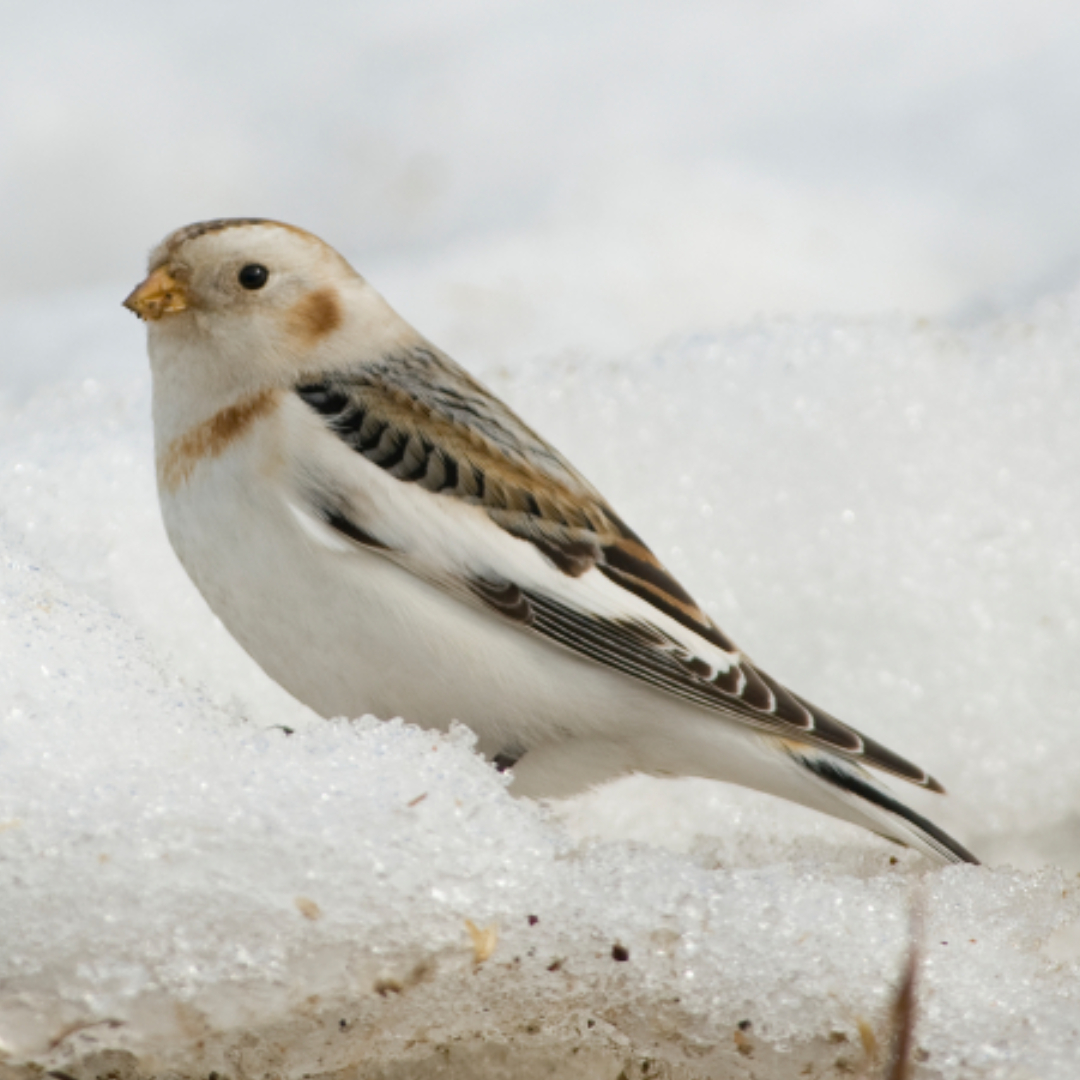
Alert Status:
Amber- winter populations increased by 33% in 40 years
Estimated number of UK breeding
pairs: 60 (2011)
Listen to snow bunting song:
During the breeding season, males have white underparts and neck which starkly contrasts their black wings and black markings on the crown. Outside of the breeding season, the contrast becomes less obvious with brown feathers appearing between the areas of black and white. Females are slightly smaller than males with browner wings and crowns compared to the males black. They have a white belly and breast with mottled brown feathers throughout and a brown cheek.
Average Length: 16-17 cm
Average Lifespan: 3 Years
Average Wingspan: 32 - 38 cm



Snow buntings have varied diets including seeds, buds, invertebrates, and, if they are in coastal areas, small crustaceans.
There are only a few areas in Scotland where this bird breeds, pairs form in late May and they are monogamous throughout the breeding season. The female builds a thick cup-shaped nest from dry grass and moss in natural crevices in the rock or holes in the ground. 2 to 8 eggs are laid in the nest and incubated for two weeks by the female while the male provides food. Once hatched the chicks are fed by both parents until they fledge 10 to 17 days later. They will sometimes produce a second brood before the breeding season ends in September.
Breeding Snow Bunting populations have remained relatively stable since the 1990s but declines in coastal breeding populations in Europe have been driven by coastal projects. Future climate is also likely to decrease these populations through loss of suitable habitat, increased parasite intensity, and temperature increases. The Scottish breeding populations lie at the very south of the breeding range and so any temperature increases are likely to decrease the breeding populations in Scotland.
Report sightings of these birds during the summer.
Be very careful not to disturb or damage active nests when trying to catch a glimpse during the breeding season.
While there are only around 60 breeding territories in the UK, the population increases to 10-15,000 when migrants arrive during the winter.
BirdLife International (2023) Species factsheet: Plectrophenax nivalis. Downloaded from http://datazone.birdlife.org/species/factsheet/snow-bunting-plectrophenax-nivalis. Accessed: 02/10/2023.
British Trust for Ornithology (2023) Snow bunting | BTO - british trust for ornithology. Available at: https://www.bto.org/understanding-birds/birdfacts/snow-bunting. Accessed: 02/10/2023.
Fossøy, F., Stokke, B. G., Kåsi, T. K., Dyrset, K., Espmark, Y., Hoset, K. S., Wedege, M. I., & Moksnes, A. (2015). Reproductive success is strongly related to local and regional climate in the Arctic snow bunting (Plectrophenax nivalis). Polar Biology, 38(3), 393–400. https://doi.org/10.1007/s00300-014-1595-6
Martínez, J., Merino, · S, Badás, · E P, Almazán, · L, Moksnes, · A, & Barbosa, · A. (2018). Hemoparasites and immunological parameters in Snow Bunting (Plectrophenax nivalis) nestlings. Polar Biology, 41, 1855–1866. https://doi.org/10.1007/s00300-018-2327-0
O, R. S., Love, O. P., Regimbald, L., Gerson, A. R., Hargreaves, A. L., & Vézina, F. (2023). Snow Buntings, an arctic cold-specialist passerine, risk overheating under intense activity even at low air temperatures. https://doi.org/10.1101/2023.09.11.557251
RSPB (2023) Snow bunting bird facts: Plectrophenax nivalis, The RSPB. Available at: https://www.rspb.org.uk/birds-and-wildlife/wildlife-guides/bird-a-z/snow-bunting/. Accessed: 02/10/2023.